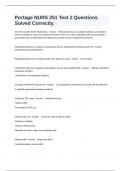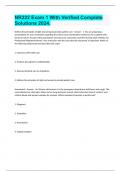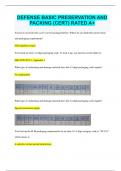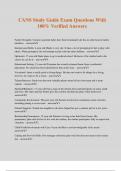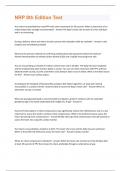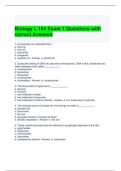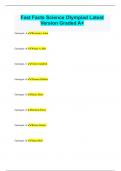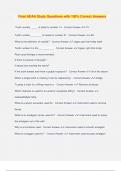Exam (elaborations)
Portage NURS 251 Test 2 Questions Solved Correctly.
- Course
- Institution
Over-the-counter (OCT) Medications - Answer Medications that are available without a prescription and are available in most cases without restriction. There are a few medications that do not require a prescription but are kept behind the pharmacy counter and ID is required for purchase. Medic...
[Show more]
